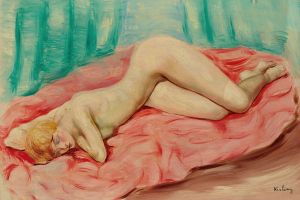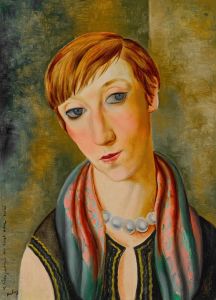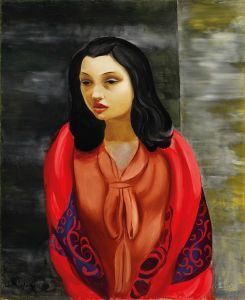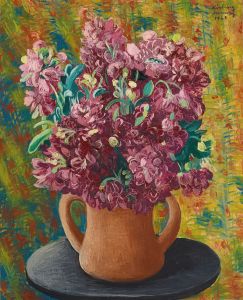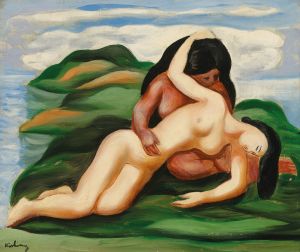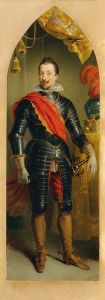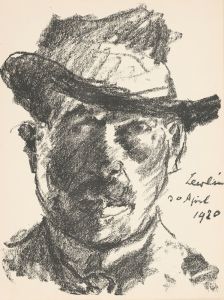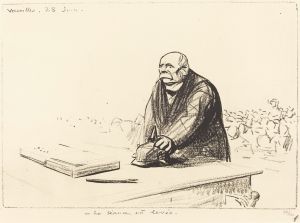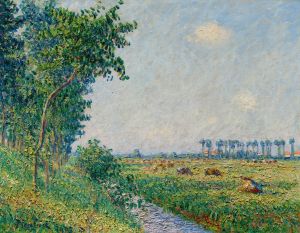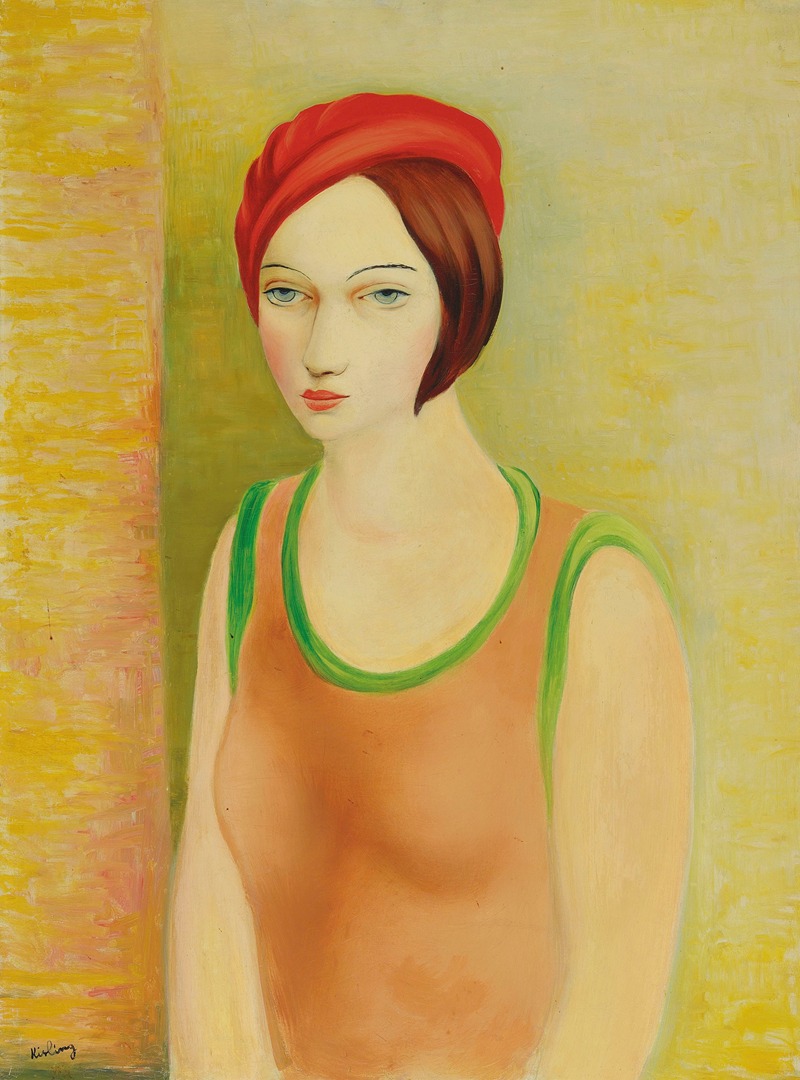
Portrait
A hand-painted replica of Moïse Kisling’s masterpiece Portrait, meticulously crafted by professional artists to capture the true essence of the original. Each piece is created with museum-quality canvas and rare mineral pigments, carefully painted by experienced artists with delicate brushstrokes and rich, layered colors to perfectly recreate the texture of the original artwork. Unlike machine-printed reproductions, this hand-painted version brings the painting to life, infused with the artist’s emotions and skill in every stroke. Whether for personal collection or home decoration, it instantly elevates the artistic atmosphere of any space.
Moïse Kisling, a Polish-born French painter, was a prominent figure in the early 20th-century art scene, particularly known for his contributions to the School of Paris. His work, "Portrait," exemplifies his distinctive style, which blends elements of realism with modernist influences. Kisling was born in Kraków, Poland, in 1891 and later moved to Paris, where he became an integral part of the Montparnasse artistic community. This vibrant environment was home to many avant-garde artists of the time, including Amedeo Modigliani, Marc Chagall, and Pablo Picasso, with whom Kisling interacted and shared ideas.
Kisling's "Portrait" is a testament to his skill in capturing the essence of his subjects with a unique blend of sensitivity and boldness. His portraits are often characterized by their expressive use of color and meticulous attention to detail, which set them apart from the more abstract tendencies of some of his contemporaries. Kisling had a particular talent for portraying the human form, often focusing on the eyes and facial expressions to convey the inner life of his subjects. This approach is evident in "Portrait," where the subject's gaze and demeanor are rendered with a striking clarity that invites viewers to engage with the painting on a personal level.
Throughout his career, Kisling was known for his ability to merge traditional techniques with modernist sensibilities. His work often features a harmonious balance between form and color, creating compositions that are both dynamic and serene. In "Portrait," this balance is achieved through the careful use of color contrasts and the subtle modeling of the figure, which gives the painting a sense of depth and vitality. Kisling's palette typically includes rich, vibrant hues, which he uses to enhance the emotional impact of his work.
Kisling's contribution to the art world extends beyond his paintings. As a member of the Montparnasse community, he was part of a larger movement that sought to redefine artistic expression in the early 20th century. His work reflects the cultural and artistic exchanges that were taking place in Paris at the time, as artists from various backgrounds came together to explore new ideas and push the boundaries of traditional art forms.
Despite the challenges he faced during his lifetime, including the disruptions of World War II, Kisling remained dedicated to his craft. His paintings continue to be celebrated for their technical excellence and emotional depth, and they hold a significant place in the history of modern art. "Portrait" is a prime example of Kisling's ability to capture the human spirit with both precision and empathy, making it a valuable piece for both art historians and enthusiasts alike.
Kisling's legacy is preserved in numerous collections around the world, and his work continues to be studied and appreciated for its contribution to the development of modern portraiture. His unique approach to painting, characterized by a blend of realism and modernism, ensures that his portraits remain timeless, resonating with audiences across generations.





